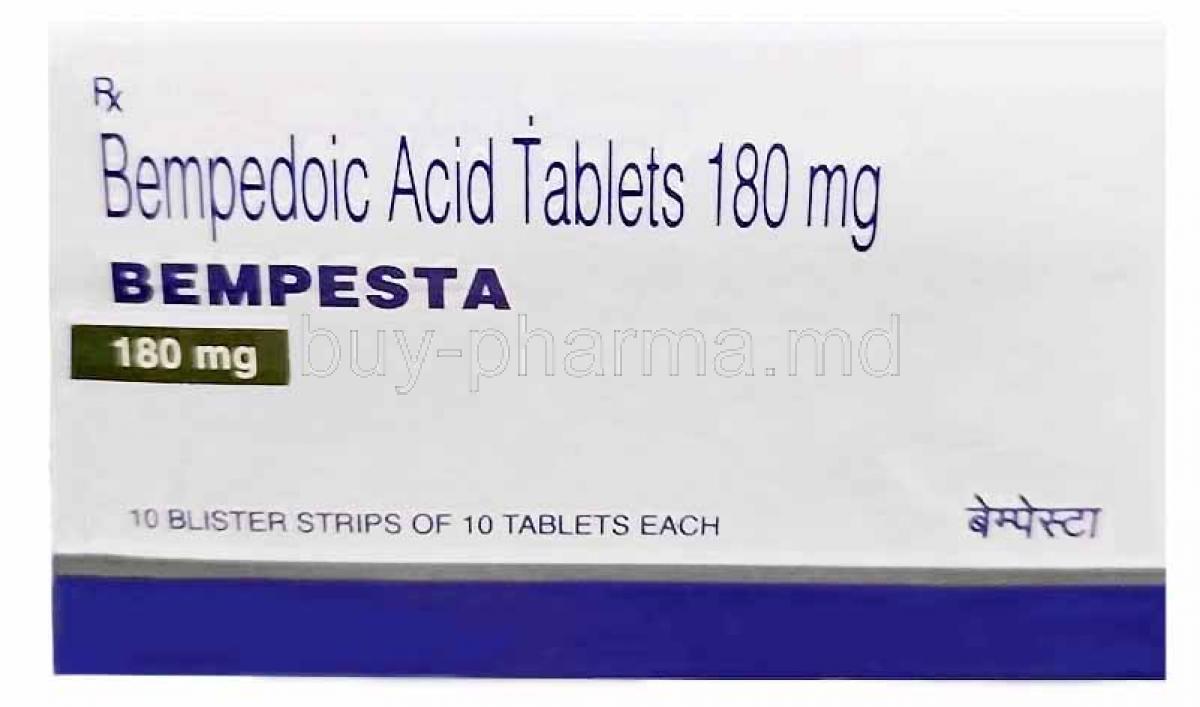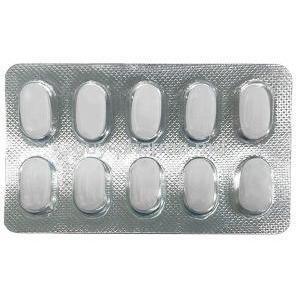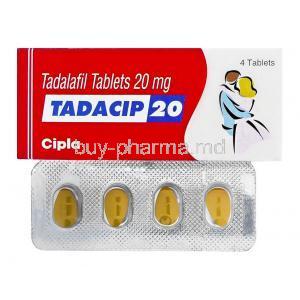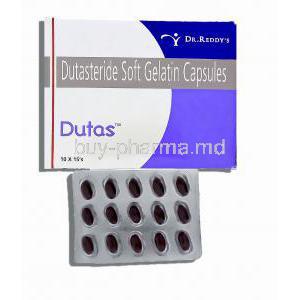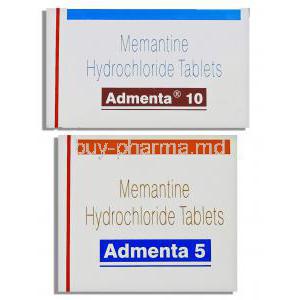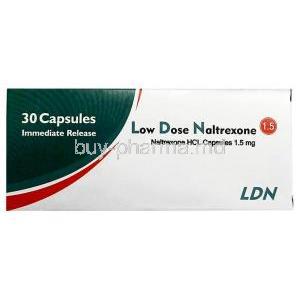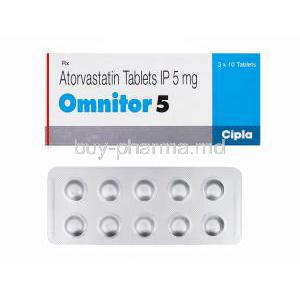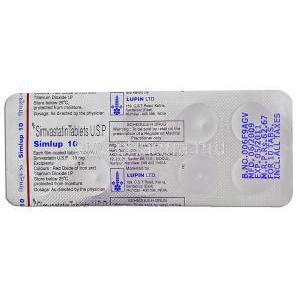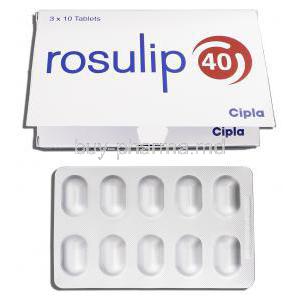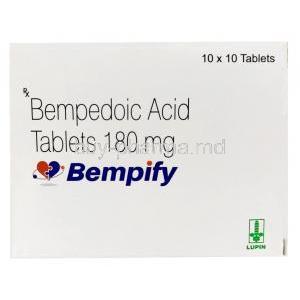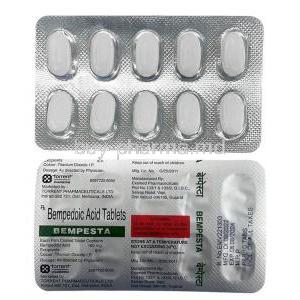Bempedoic acid
- I. Introduction to Bempedoic Acid
- II. Composition and Chemical Properties of Bempedoic Acid
- III. Uses of Bempedoic Acid in Medical Practice
- IV. Mechanism of Action: How Bempedoic Acid Works
- V. Dosage and Administration Guidelines
- VI. Side Effects of Bempedoic Acid
- VII. Interactions with Other Medications and Substances
- VIII. Contraindications and Cautions for Bempedoic Acid Use
- IX. Special Considerations in Administration
- X. Overdose and Emergency Management
- XI. Storage, Handling, and Disposal of Bempedoic Acid
- XII. Important Precautions and Patient Information
I. Introduction to Bempedoic Acid
Understanding Bempedoic Acid: Definition and Overview Bempedoic acid is a medication that offers new possibilities in lipid-lowering drugs. As a prodrug, it goes through a process of activation in the liver, which helps minimize its impact on the entire body and reduces associated risks.
The History and Development of Bempedoic Acid The origin of acid can be traced back to extensive scientific research to reduce the burden of cardiovascular diseases. Its development, driven by the need for effective lipid regulators, showcases the progress made in pharmacological science.
II. Composition and Chemical Properties of Bempedoic Acid
The primary component of acid is its active substance, which effectively inhibits a key enzyme called ATP citrate lyase. This inhibition is strategically essential in reducing low-density lipoprotein (LDL) cholesterol.
Bempedoic acid comes in formulations carefully designed to maximize its effectiveness and ensure that patients can easily follow the treatment plan. These formulations include tablets and extended-release capsules, which cater to the diverse needs of patients.

III. Uses of Bempedoic Acid in Medical Practice
Bempedoic acid is a drug used in conjunction with lifestyle modification and/or other agents for the treatment of refractory hypercholesterolemia. It is particularly effective for patients who cannot tolerate statins or need medication to lower their lipid levels 1. By reducing LDL cholesterol levels, Bempedoic acid plays a role in preventing cardiovascular events such as heart attacks and strokes 1. Emerging studies suggest that Bempedoic acid may have off label applications in conditions, like familial hypercholesterolemia, which further expands its potential uses beyond its initial purpose 1.
Reference:
IV. Mechanism of Action: How Bempedoic Acid Works
Bempedoic acid plays a role in reducing cholesterol production by blocking ATP citrate lyase. This blocking action leads to cholesterol levels in the liver, which increases LDL receptors and helps clear out LDL.
Compared to statins, Bempedoic acid offers an approach that can benefit patients who cannot tolerate statins. Its distinct pharmacodynamic profile also allows it to work alongside other medications to lower lipid levels.
V. Dosage and Administration Guidelines
Dosage Recommendations for Conditions The amount of bempedoic acid needed depends on the specific lipid disorder being treated. It is generally recommended to take a fixed dose orally following the guidance of your physician.
Methods and Timing of Administration To achieve the results, it is advised to take Bempedoic acid at the same time every day with or without food as directed by your doctor.
Adjustments for Specific Populations In cases such as hepatic impairment or when taking certain medications, dose adjustments may be necessary. These modifications are made to ensure the treatment plan's effectiveness and safety.

VI. Side Effects of Bempedoic Acid
Common Side Effects; Identification and Management The frequently encountered side effects of Bempedoic acid are muscle pain, joint pain, and tiredness. These effects can usually be controlled by adjusting the dosage or providing treatment.
Adverse Severe Reactions Although uncommon there have been reported instances of adverse reactions such as tendon rupture and hypersensitivity. It is recommended to seek medical attention in these situations.
Monitoring Long-Term Side Effects When using Bempedoic acid over a period, it is essential to closely monitor for potential side effects, such as elevated liver enzymes and changes, in kidney function.
VII. Interactions with Other Medications and Substances
The use of acid may lead to interactions with medications such as warfarin, which requires close monitoring of prothrombin time/international normalized ratio (PT/INR).
It is essential to maintain a diet and a healthy lifestyle to enhance the lipid-lowering effects of Bempedoic acid, although no specific dietary restrictions are associated with its use.
VIII. Contraindications and Cautions for Bempedoic Acid Use
Absolute contraindications: Instances where it is necessary to avoid using Bempedoic Acid include patients who have shown hypersensitivity to any of its components and those with liver disorders.
Preventive measures for high-risk groups: Extra care should be taken when prescribing Bempedoic Acid to patients who have a history of tendon disorders or impairment or are at risk of developing hyperuricemia.
IX. Special Considerations in Administration
Elderly Patients: Adjusted Dosing and Monitoring
When prescribing bempedoic acid to patients, it is essential to take into account their unique characteristics such as changes in how their body processes drugs and increased vulnerability, to negative reactions.
Some important considerations include; Modifying the dosage to minimize the chances of experiencing side effects that affect the musculoskeletal system.
Regularly monitoring kidney and liver functions to ensure that the medication is working effectively and does not pose any safety concerns.
Pregnancy and Breastfeeding: Safety and Recommendations
The use of acid during pregnancy and breastfeeding is a matter of great importance.
There is clinical information available for these groups, so it is generally recommended that pregnant women avoid using the drug unless necessary and under close medical supervision.
- Nursing mothers should also be cautious due to the uncertainty surrounding how the drug is excreted in breast milk.
Pediatric Use: Efficacy and Safety in Children
The safety and effectiveness of Bempedoic acid in children have not been thoroughly established. As a result, its use in patients should only be considered if the possible benefits outweigh the potential risks. It is crucial to monitor their growth, development, and any potential side effects through clinical observation.
X. Overdose and Emergency Management
Recognizing Symptoms of Overdosage
In cases of an overdose of acid, the symptoms may not be specific but can include muscle pain, indigestion, and potentially more severe effects on the entire body. It is essential to seek medical attention in such situations.
Immediate Steps and Treatment Protocols
To effectively manage an overdose of acid, it is crucial to take the following actions;
1. Immediately stop taking the medication.
2. Provide symptomatic treatment since there is no specific antidote available.
XI. Storage, Handling, and Disposal of Bempedoic Acid
Proper Storage Conditions
To ensure the effectiveness and safety of acid:
- it is essential to store it at room temperature away from direct sunlight and moisture.
- Keep it in its packaging to prevent any potential contamination.
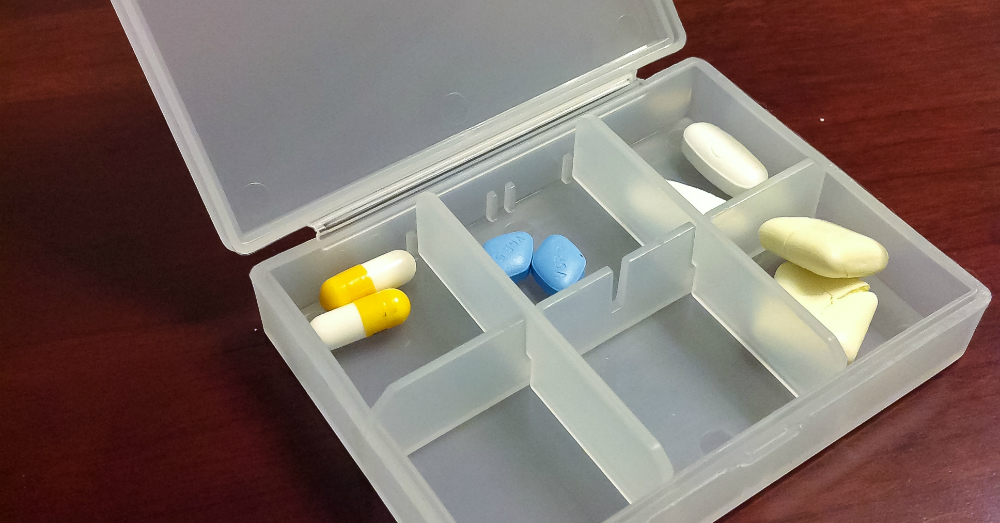
Handling Precautions and Safety Measures
When working with acid, it is important to follow standard safety procedures to avoid any accidental exposure. If needed make sure to use personal protective equipment.
Disposal Guidelines for Unused or Expired Medication
It is essential to handle the disposal of Bempedoic acid.
- Any unused or expired medications should be discarded following the guidelines set by your regulations.
- It is not recommended to flush the medication down the toilet or throw it in your household trash.
XII. Important Precautions and Patient Information
Educating Patients: What They Need to Know
It is crucial to provide patients prescribed with Bempedoic acid with education. This should cover details about how to use the medication, potential side effects to be aware of, and the importance of following the prescribed treatment plan. Additionally, patients should receive guidance on making lifestyle changes that can support and enhance the effectiveness of their treatment.
Monitoring and Follow-Up Recommendations
It is essential to follow up and monitor patients who are taking Bempedoic acid for the following reasons;
1. To evaluate the effectiveness of the treatment. Make any necessary adjustments to the dosage.
2. To watch for any long-term side effects or interactions with other medications.
We can ensure optimal patient care by assessing the treatment efficacy and monitoring for any adverse effects or medication interactions.
Bempedoic acid FAQ
- Why is bempedoic acid better than statins?
- What is bempedoic acid used for?
- Is bempedoic acid bad for the liver?
- What are the advantages of bempedoic acid?
- Is bempedoic acid safe?
- Does bempedoic acid raise blood sugar?
- Is bempedoic acid safe for kidneys?
- Can I stop taking bempedoic acid?
- Does bempedoic acid have side effects?
- Does bempedoic acid increase uric acid?
- When is the best time to take bempedoic acid?
- Can bempedoic acid cause liver damage?
- What is the difference between bempedoic acid and statins?
- Does bempedoic acid cause weight gain?
- Is Bempedoic safe?
- What are the benefits of bempedoic acid?
- Does bempedoic acid cause gout?
- Does bempedoic acid raise blood pressure?
- How long does it take for bempedoic acid to work?
- What does bempedoic acid do to the liver?
Why is bempedoic acid better than statins?
The action of acid aligns with the pathway targeted by statins, but it remains inactive until it reaches the liver.
What is bempedoic acid used for?
In treating blood cholesterol, bempedoic acid is often combined with a diet and other medications that lower cholesterol levels. It specifically targets reducing the levels of cholesterol (LD) in patients, with primary hyperlipidemia, such, as heterozygous familial hypercholesterolemia (HeFH).
Is bempedoic acid bad for the liver?
The use of acid is linked to an occurrence of mild liver enzyme elevations that show no symptoms and resolve on their own while undergoing treatment and in rare cases can lead to noticeable acute liver damage.
What are the advantages of bempedoic acid?
The use of acid led to a decrease in major cardiovascular issues like heart attacks and the need for heart procedures.
Is bempedoic acid safe?
Yes
Does bempedoic acid raise blood sugar?
No
Is bempedoic acid safe for kidneys?
The rise in cases of kidney damage associated with acid, has been on the upswing.
Can I stop taking bempedoic acid?
Prior to getting pregnant or once pregnancy is confirmed, it is recommended to stop taking acid medication, and women who could become pregnant should practice birth control while undergoing bempedoic acid treatment.
Does bempedoic acid have side effects?
Skin redness or irritation may occur along with raised welts or itching sensation on the skin surface. Swelling around the eyes or facial features like lips and tongue or even difficulty in breathing or swallowing food items resulting in a feeling of lightheadedness or fainting episodes, alongside a rapid or intensified heartbeat rhythm.
Does bempedoic acid increase uric acid?
Patients who are prescribed acid may experience levels of uric acid in their blood and be at risk of tendon ruptures.
When is the best time to take bempedoic acid?
Once a day with or without food
Can bempedoic acid cause liver damage?
Having levels of liver enzymes may suggest that there is inflammation or harm to the liver.
What is the difference between bempedoic acid and statins?
Bempedoic acid does not impact control negatively and does not penetrate muscle cells.
Does bempedoic acid cause weight gain?
No
Is Bempedoic safe?
Yes
What are the benefits of bempedoic acid?
The use of acid also decreased the chances of experiencing significant events such as cardiovascular-related deaths or nonfatal heart attacks and strokes (which make up a three-part combination) fatal or nonfatal heart attacks alone and procedures for coronary revascularization.
Does bempedoic acid cause gout?
Yes
Does bempedoic acid raise blood pressure?
No
How long does it take for bempedoic acid to work?
Following three months of treatment, scientists discovered that bempedoic acid led to an 18.1 percent decrease in patients’ LDL cholesterol levels when compared to the placebo group's baseline levels.
What does bempedoic acid do to the liver?
A substance called acid works by blocking a liver enzyme known as adenosine triphosphate citrate lyase (ACL), which helps reduce cholesterol production and lowers LDL cholesterol levels in the body.

